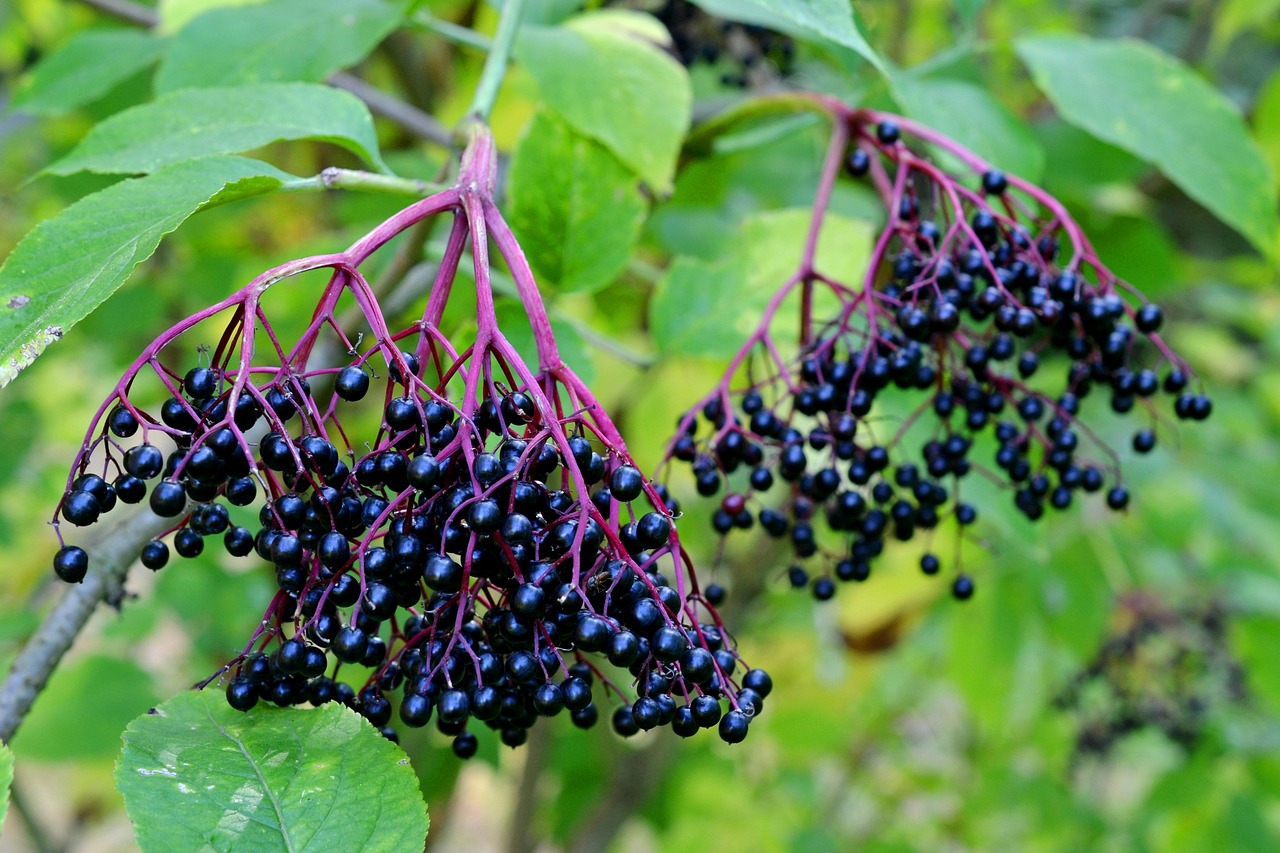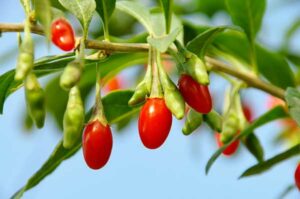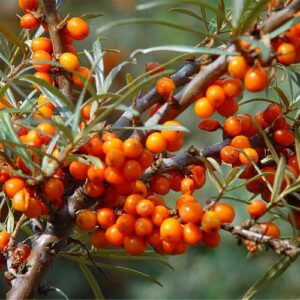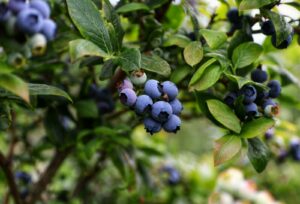Cultivating a Thriving Garden: Master the Art of Growing Elderberries
Growing elderberries in my garden is immensely rewarding. They provide tasty and nutritious berries and play a vital role in enhancing the local ecosystem by nurturing various wildlife species and promoting a flourishing, balanced environment. Elderberries, known for their immune-boosting and medicinal properties, are becoming increasingly popular among home gardeners. These versatile berries are used to make jams, jellies, syrups, and even wine. If you want to learn how to grow elderberries in your backyard, this comprehensive guide will walk you through the necessary steps, from choosing the right elderberry varieties to planting elderberries and caring for them throughout their growth cycle.
Section 1: Choosing the Right Elderberry Varieties
Before you dive into planting elderberries, it is essential to understand the different elderberry varieties available. Two common species are the European elderberry (Sambucus nigra) and the American elderberry (Sambucus canadensis). While both species produce delicious berries, they differ in growth habits, climate preferences, and fruit yields.
1.1 European Elderberry (Sambucus nigra)
- Taller and more vigorous growth, reaching heights of up to 20 feet.
- Best suited for cooler climates (USDA hardiness zones 5-8).
- Produces slightly larger, sweeter berries than the American elderberry.
- Requires cross-pollination to yield a substantial fruit crop.
1.2 American Elderberry (Sambucus canadensis)
- Smaller, bushier growth habit, typically reaching 6-12 feet in height.
- Adaptable to a wider range of climates (USDA hardiness zones 3-9).
- Produces smaller berries with a slightly more tart flavour.
- Self-pollinating but can benefit from cross-pollination for larger fruit yields.
Section 2: How to Grow Elderberries: Site Selection & Preparation
2.1 Site Selection
When planting elderberries, choose a location that provides the following conditions:
- Full sun to partial shade (at least 6 hours of sunlight daily).
- Well-draining soil with a pH between 5.5 and 6.5.
- Protection from strong winds, as elderberry plants have shallow root systems and may be susceptible to wind damage.
2.2 Soil Preparation
- Amend the soil with organic matter, such as compost or well-rotted manure, to improve drainage and fertility.
- Test the soil pH and adjust as needed to achieve the desired range.
- Remove any weeds, rocks, or debris from the planting area.
Section 3: Planting Elderberries
3.1 When to Plant
- Plant elderberry cuttings or potted plants in early spring once the threat of frost has passed.
- You may also plant in the fall if you live in an area with mild winters.
3.2 How to Plant
- Dig a hole twice as wide and deep as the root ball or cutting.
- Place the cutting or potted plant into the hole, ensuring the roots are spread out and not crowded.
- Fill the hole with soil, gently firming it around the roots to eliminate air pockets.
- Water the plant thoroughly to settle the soil and establish good root-to-soil contact.
- Space plants 6-10 feet apart, depending on the variety and desired growth habit.
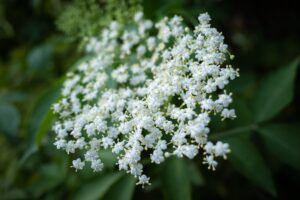
Section 4: Elderberry Plant Care
In my experience, they are low-maintenance and relatively easy to care for.
4.1 Watering
Elderberries require consistent moisture, particularly during the first few years of growth. Water your plants regularly, providing about 1-2 inches of water per week. Adjust your watering frequency depending on rainfall and soil conditions to prevent overwatering.
4.2 Fertilizing Elderberries
Elderberries benefit from annual fertilization to promote healthy growth and fruit production. According to the package instructions, apply a balanced, slow-release fertilizer, such as a 10-10-10 formula in early spring. Alternatively, organic amendments like compost or well-rotted manure can provide essential nutrients.
4.3 Pruning
Pruning is an essential aspect of how to grow elderberries, as it helps maintain their size, shape, and productivity. Prune your elderberry plants in late winter or early spring before new growth appears. Remove dead, damaged, or diseased wood, as well as any branches that are crossing or rubbing against each other. Thin out older branches to encourage new, productive growth.
4.4 Pest and Disease Control
Elderberries are relatively pest and disease-resistant. However, they can be affected by pests like aphids, borers, and spider mites or diseases such as powdery mildew, canker, or leaf spot. Regularly inspect your plants for signs of infestation or illness, and take appropriate action if needed. Employing organic pest control methods, like introducing beneficial insects or using neem oil, can help minimize damage while keeping your garden eco-friendly.
4.5 Harvesting
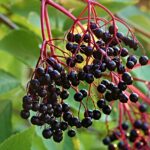
Elderberries typically ripen in late summer or early fall, depending on the variety and climate. Harvest the berries when they are fully ripe and have developed a deep, dark colour. Collect the entire fruit cluster by cutting the stem with a sharp pair of garden shears. Remember to wear gloves when handling elderberries, as the unripe berries, leaves, and stems can cause skin irritation.
Section 5: Elderberry Companion Plants
Incorporating elderberry companion plants into your garden can enhance the visual appeal and improve the overall health and productivity of your elderberry bushes. Companion planting involves growing plants with complementary characteristics near each other, promoting mutual benefits such as pest control, pollination, and soil health.
Some popular elderberry companion plants include:
- Yarrow (Achillea millefolium): Yarrow’s small, white flowers attract beneficial insects that prey on common garden pests, providing natural pest control for your elderberry bushes.
- Clover (Trifolium spp.): As a nitrogen-fixing plant, clover helps improve soil fertility, benefiting elderberries’ growth and fruit production.
- Bee balm (Monarda didyma): Bee balm’s showy flowers are a magnet for pollinators like bees, butterflies, and hummingbirds, which can improve elderberry pollination and fruit set.
- Dill (Anethum graveolens): Dill’s feathery foliage and yellow flowers attract beneficial insects and pollinators, while its strong scent may deter some pests.
By carefully selecting and placing elderberry companion plants in your garden, you can create a thriving, diverse ecosystem that supports the growth and productivity of your elderberry bushes.
Related Links:
Conclusion
Learning how to grow elderberries is an enjoyable and fulfilling gardening project that offers numerous benefits. By carefully selecting the best elderberry varieties for your region, properly planting elderberries, and following our comprehensive care guide, you’ll be well on your way to enjoying a bountiful harvest of these versatile, healthful berries.

